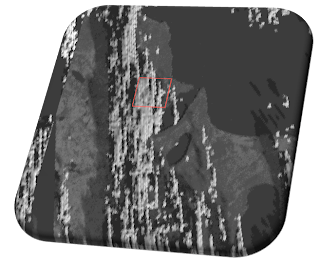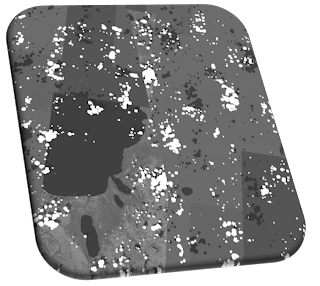 We often want the ability to add clouds to a large scale scene in order to see the reflective, transmissive and shadowing effects on the scene. In these cases we are not so much concerned with the absolute radiometry of the clouds (true multiple scattering, exact modeling of limb regions, etc..), as we are with capturing bulk effects (single-scattering contributions, transmission effects, realistic spatial distributions, etc..).
We often want the ability to add clouds to a large scale scene in order to see the reflective, transmissive and shadowing effects on the scene. In these cases we are not so much concerned with the absolute radiometry of the clouds (true multiple scattering, exact modeling of limb regions, etc..), as we are with capturing bulk effects (single-scattering contributions, transmission effects, realistic spatial distributions, etc..).With these cases in mind, and to support modeling of the next generation Landsat sensor, we are developing a simplistic and very fast large-scale cloud model based on using the USAF Cloud Scene Simulation Model (CSSM) and OPAC data to generate voxelized representations of inherent optical properties. DIRSIG uses this data to drive a simple radiative transfer model that captures the bulk of the radiometric effects on the scene with very little additional computation overhead.
 The process is currently going through a period of validation and refinement and should be available to the general user in the near future.
The process is currently going through a period of validation and refinement and should be available to the general user in the near future.The two images shown are prototype (single wavelength) visualizations demonstrating thin, cirrus-like clouds (right) and thick, cumulus-like clouds (left). Both images show a large collect over Lake Tahoe (note that only part of the scene is available at this time, the rest is filled in with generic background materials), the cirrus demo is a zoomed in portion of the same scene. The apparent "jaggedness" of the images is an artifact of the particular sensor being modeled and is an intended effect. In both cases, CSSM was used to generate semi-random (wind-vector based) 50km x 50km x 10km volumetric concentration maps which give the spatial distributions seen.
Comments